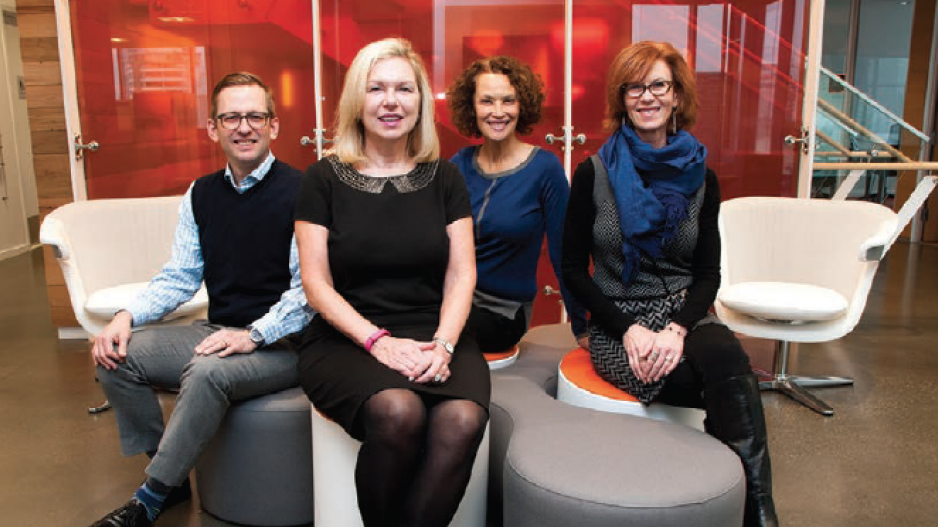The interior design team at Stantec Architecture Ltd. may be “Vancouver’s best-kept secret,” said principal Susi Krauss, but the word will likely spread this year as the 26-member group stamps its signature on more high-profile retail and office projects.
Yet, reflective of the firm’s engineering roots, the Stantec team injects a pragmatic note into the often flashy world of interior design.
Stantec’s architecture and interior design team, formed in 2003, is a small part of Edmonton-based Stantec, the giant engineering and architectural firm that has 200 offices and 14,000 employees worldwide, but it’s making a big noise in Vancouver.
The team, No. 4 on Business in Vancouver’s list of the biggest interior design firms in Metro Vancouver (see page 18), has a long list of major projects in its resumé. They include helping Victoria’s Secret splash onto Burrard Street, being the designers for a major expansion at Vancouver International Airport that opens this month and consulting on the McArthurGlen outlet mall in Richmond and the expansion of both Oakridge Centre and Brentwood Town Centre, noted senior associate Janice Hicks.
It has also designed fresh office interiors for the Insurance Corporation of BC and BC Hydro, is helping to update the venerable Arbutus Club and crafted “understated elegance” for the new tri-level law offices of Bull Housser in the Telus Garden tower. This spring, the team’s senior associate Jo Ellen Kelly will put the finishing touches on Canada House and the renovated offices for the High Commission in London, England. Kelly is the lead designer for the London Chancery project, which involves three Stantec offices.
“We do work for retail, hospitality, health care, aviation, government and corporate clients,” Krauss said. “It is a very diverse field of expertise.”
Both Krauss and fellow principal Kent Goodwin caution that contemporary trends and glitzy technology – apparent touchstones of the industry – can get in the way of good design in commercial real estate.
An example is LED lighting, noted Krauss, which she said has transformed interior design by generating much more light at lower cost. But she said the light-emitting diodes change how colours are seen, which can be off-putting for offices and fatal for some retailers.
“Suddenly, the walls, floors and furniture colours do not go together anymore.”
Goodwin, the group’s retail lead, also warned merchants against being seduced from their roots by whiz-bang inventions.
Contemporary retail design can incorporate video and audio signage, digital imaging, remote point-of-sale technology, facial and body recognition software, cash wraps and even augmented-reality mirrors that will show how a shirt or skirt will look without a customer even trying it on.
“But if all that technology goes down, what are you left with?” Goodwin asked. “It is thoughtful service and the right product offering that will keep customers coming back. That is the reality of retail.” •




